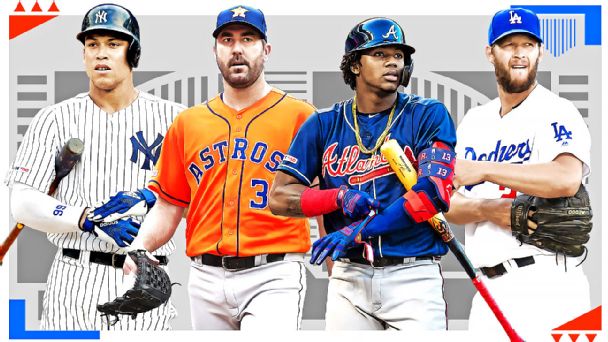Can the Dodgers overcome a pitching plan that beat them in 2018 World Series?
It’s on L.A.’s lineup to find a way to break through while the Nationals follow a star-driven script on the mound….

WASHINGTON — The Los Angeles Dodgers weren’t necessarily expecting Max Scherzer to jog out of the bullpen and pitch in relief Friday night in their most recent game in the MLB playoffs — but they weren’t necessarily surprised by it, either.
“Boston showed us last year,” Max Muncy, among the Dodgers’ most feared hitters, said. “If a guy’s not starting, that doesn’t mean he’s not going to pitch that day.”
Barely 11 months earlier, the Boston Red Sox made up for a flawed bullpen by filling a combined 9⅔ innings over the course of five World Series games with relief efforts from David Price, Chris Sale and Nathan Eovaldi. Unburdened by the thought of facing the same hitters multiple times over, they threw every pitch with maximum effort, saw their stuff play up and bullied the Dodgers into their second consecutive final-round exit.
The Washington Nationals, suddenly holding the advantage after earning a road split to begin this National League Division Series, are navigating the postseason with similar intent. Their bullpen is, by every measure, dreadful. But their starting rotation is a major strength. And the constraints of a five-game series allow for the type of creativity that can suddenly make a powerhouse team like the Dodgers seem vulnerable.
The Dodgers were 13 wins and 124 runs better than the Nationals this season. But you can divide those 162 games into 54 three-game increments and find 14 instances when the Dodgers lost at least two out of three. And that’s what their sensational season comes down to at this moment — a best of three, starting with back-to-back games from Nationals Park. (Game 3 is Sunday at 7:45 p.m. ET on TBS.)
The Nationals’ approach seems simple: They have a possibility of 27 innings to cover, and Scherzer, Stephen Strasburg and Patrick Corbin need to absorb as many of them as possible.
The Dodgers probably won’t advance if they don’t break through against at least one of them.
“They trust their starters, and they’re going to rely on their starters,” Dodgers manager Dave Roberts said after the 4-2 loss in Game 2. “We just gotta keep taking good at-bats.”
The Dodgers showed a patient approach against Corbin and his heavy slider in a victorious Game 1, but their only runs came off a quartet of walks and a misplayed grounder. The damage was done against a bullpen that finished the regular season with a major league-worst 5.66 ERA, a unit that Nationals manager Dave Martinez will desperately try to avoid.
In Game 2 the following night, the Dodgers, with an NL-best .810 OPS and 279 home runs this season, accumulated five hits and 17 strikeouts against Strasburg, Scherzer and the only two Nationals relievers who will be trusted this month — Sean Doolittle and Daniel Hudson. Later that night, in a cramped visitors clubhouse at Dodger Stadium, Scherzer was asked to describe the magnitude of the sacrifices made by him and Strasburg, both of whom logged high-intensity innings on short rest.
He scanned the room.
“I think everybody would do that in this situation,” Scherzer said. “It’s not just us; there’s 25 guys playing at the same level. From the outside looking in, maybe it looks like that. Not in this clubhouse.”
When the Nationals boarded their cross-country flight back home Saturday morning, they were still uncertain whether it would be Scherzer or Anibal Sanchez starting opposite Dodgers left-hander Hyun-Jin Ryu in Game 3. Scherzer could start Game 3, then come out of the bullpen in a potential Game 5. Strasburg could technically help out of the bullpen in Monday’s Game 4, then start Game 5 two days later. Corbin could pitch out of the bullpen in Game 3, or start on short rest in Game 4, or give the Nationals whatever they need in Game 5.
It sounds exhausting, all of it — but that’s what it might take to put the Dodgers on their heels.




